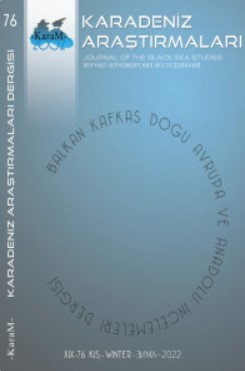KİMEK-KIPÇAK ETNİK OLUŞUMUNDA MOĞOL KÖKENLİ UNSURLAR
MONGOLIAN ELEMENTS IN THE ETHNIC FORMATION OF THE KIMEK-KIPCHAKS
Author(s): Haşim ÖZELSubject(s): Social history, Cultural Anthropology / Ethnology, 6th to 12th Centuries, Inter-Ethnic Relations
Published by: Karadeniz Araştırmaları Merkezi
Keywords: Kipchak; Kimak; Qai; Bayawut; Olberli;
Summary/Abstract: The union of Kipchak tribes consisted of a blend of ethnic Turks alongside other races from whatever lands they migrated to and captured – Mongolians, Persians, and, to a lesser extent, Finno-Ugric peoples. For almost two centuries (the second half of the 6th century and the first quarter of the 13th century), they ruled the area from the Irtysh coasts to the Hungarian steps. They were strongest tribe among the Kimaks, lived around the rivers Ishim and Tobol (i.e. the western parts of the Kimak territory). Kimaks, like the Kipchaks, were confederation formed by the union of various tribes in the 9th century. Numerous Islamic sources tell us that the founding tribe had Tatar / Mongolian roots, and included various tribes that we will see among the later Oghuzs – especially the Kipchaks. The Kun Migration led to a power change in the West Siberian steppes – initiated by the Qai and Kun tribes in Manchuria at the beginning of the 11th century, under the pressure of the Kitan. Shortly thereafter, the Kimaks lost their sovereignty and were replaced by the Kipchaks, who ruled over west Kimak country. That process of ethnogenesis continued for over century to come, during which tribes from the Mongolian environment (i.e. Bayavut and Ölberli) joined the Kipchaks.
Journal: Karadeniz Araştırmaları
- Issue Year: 2022
- Issue No: 76
- Page Range: 1097-1108
- Page Count: 12
- Language: Turkish

